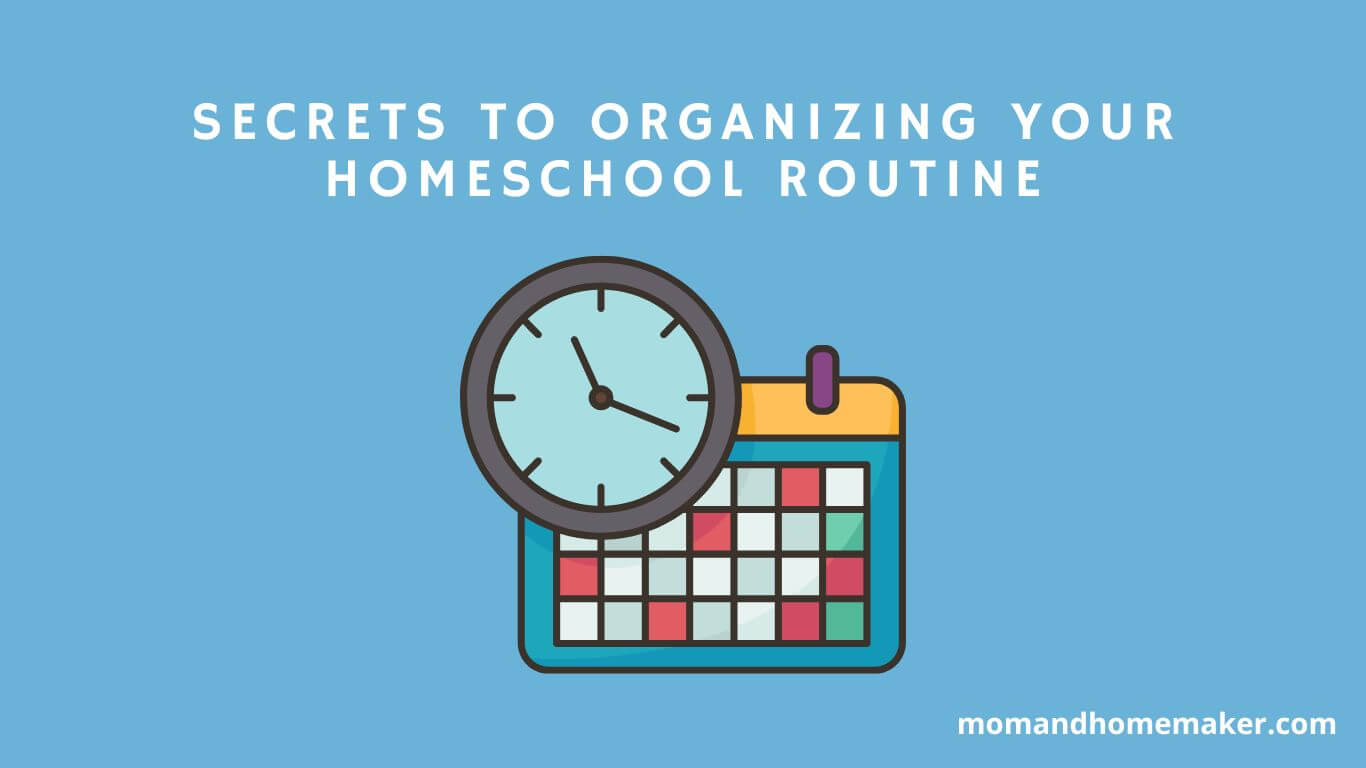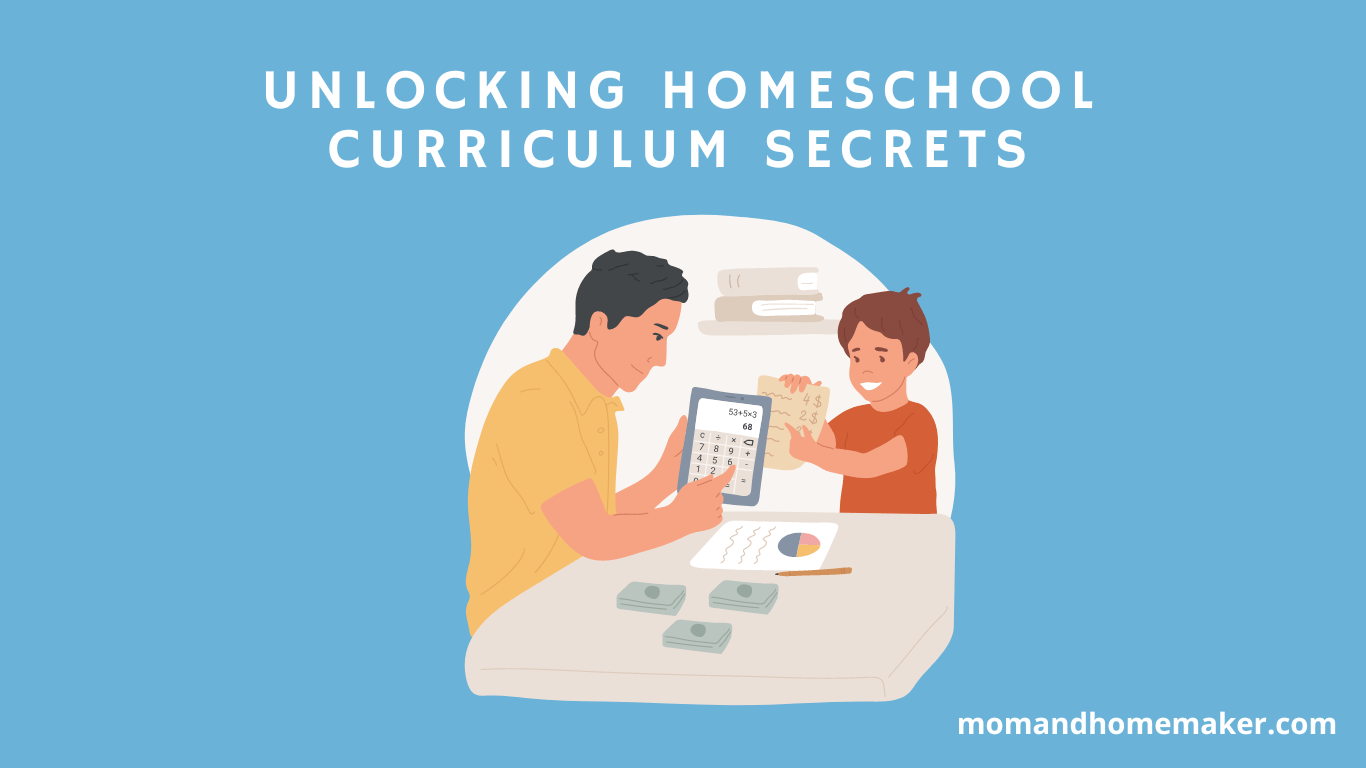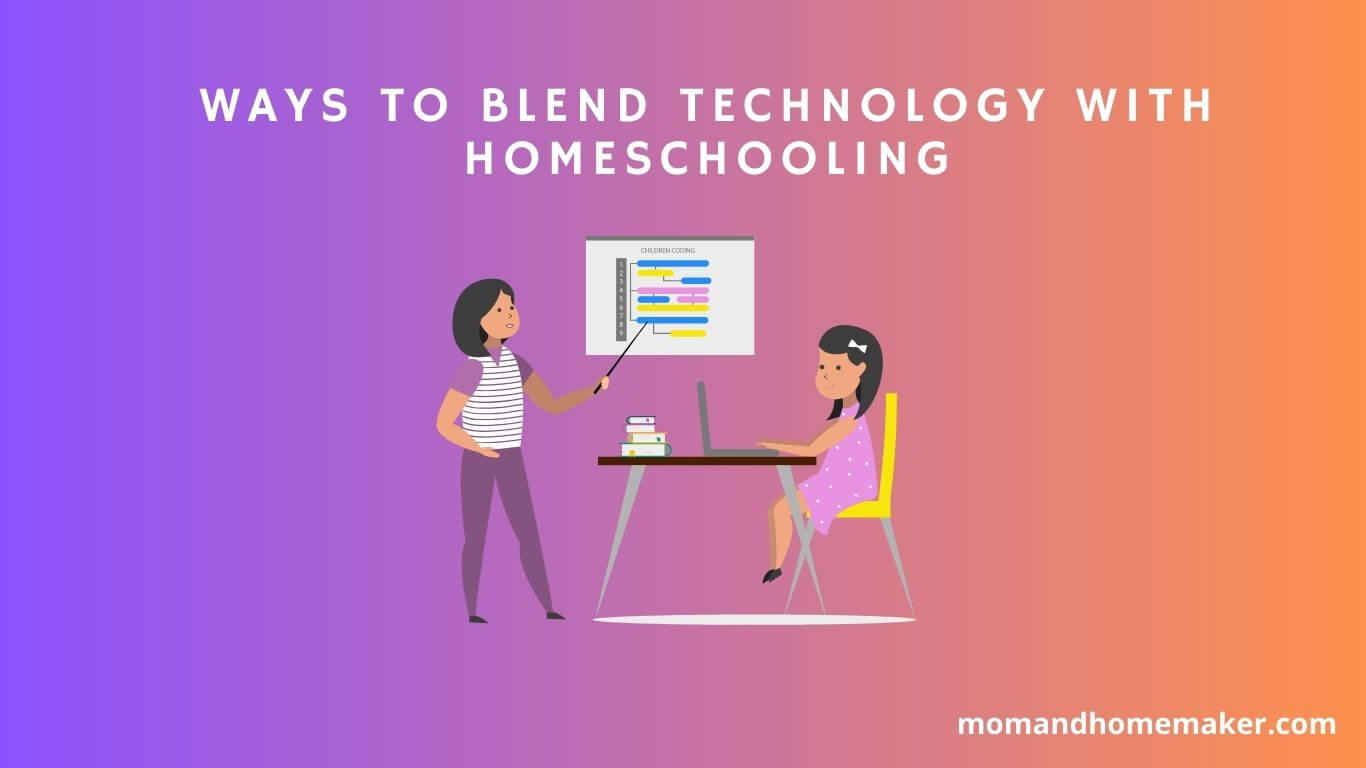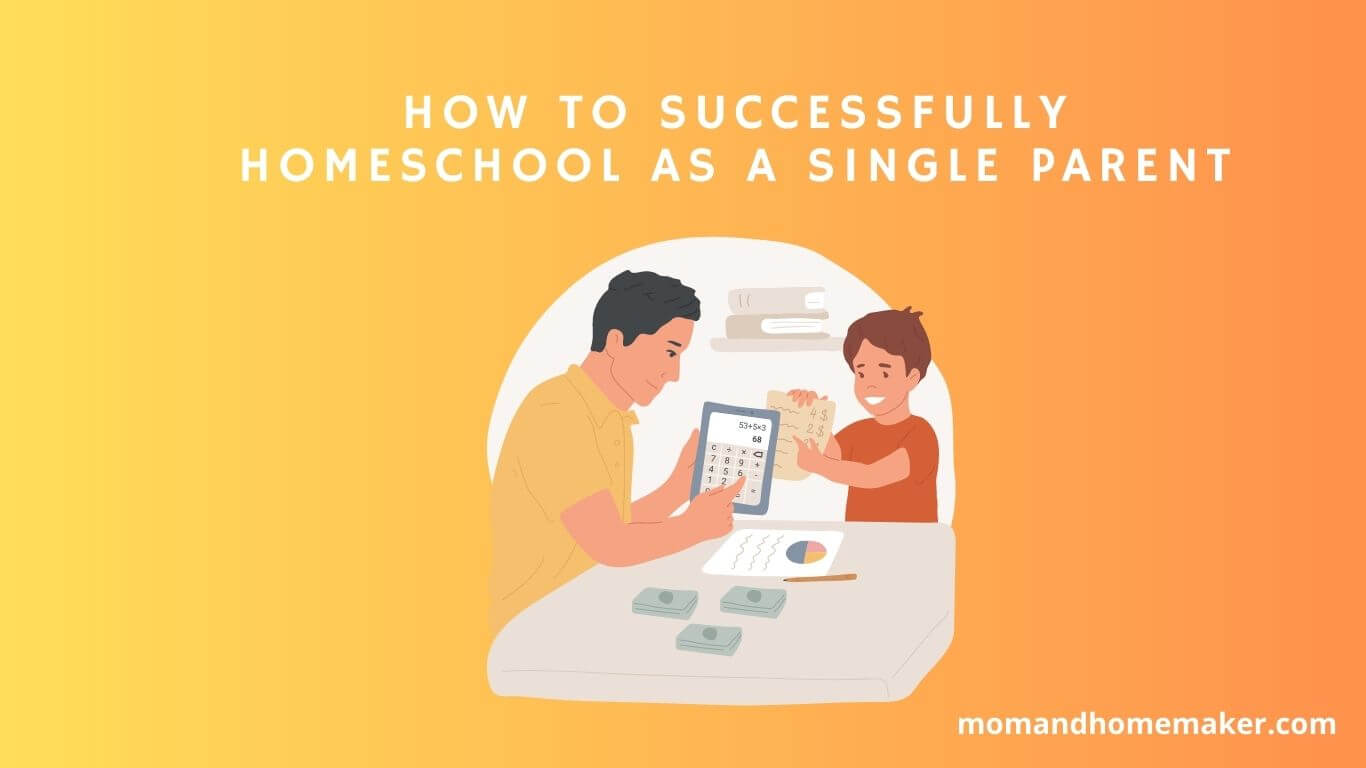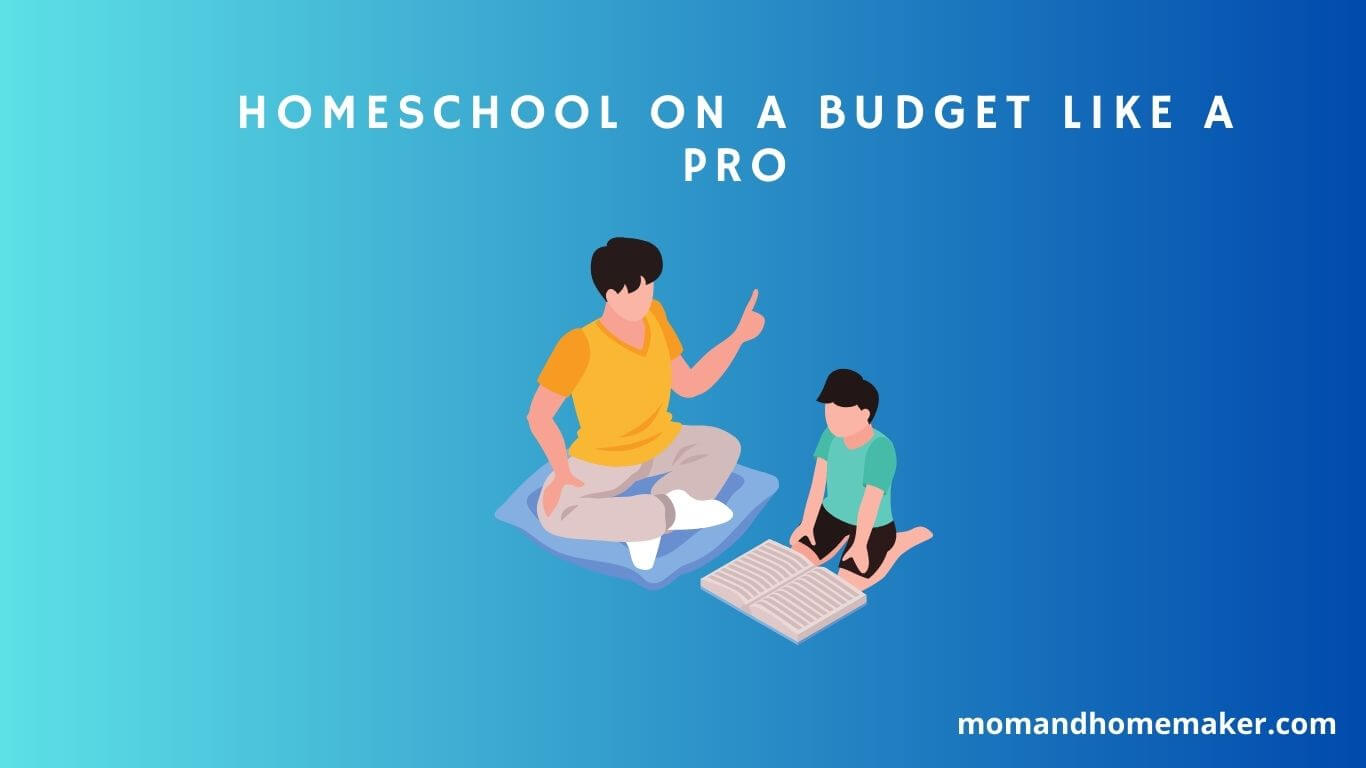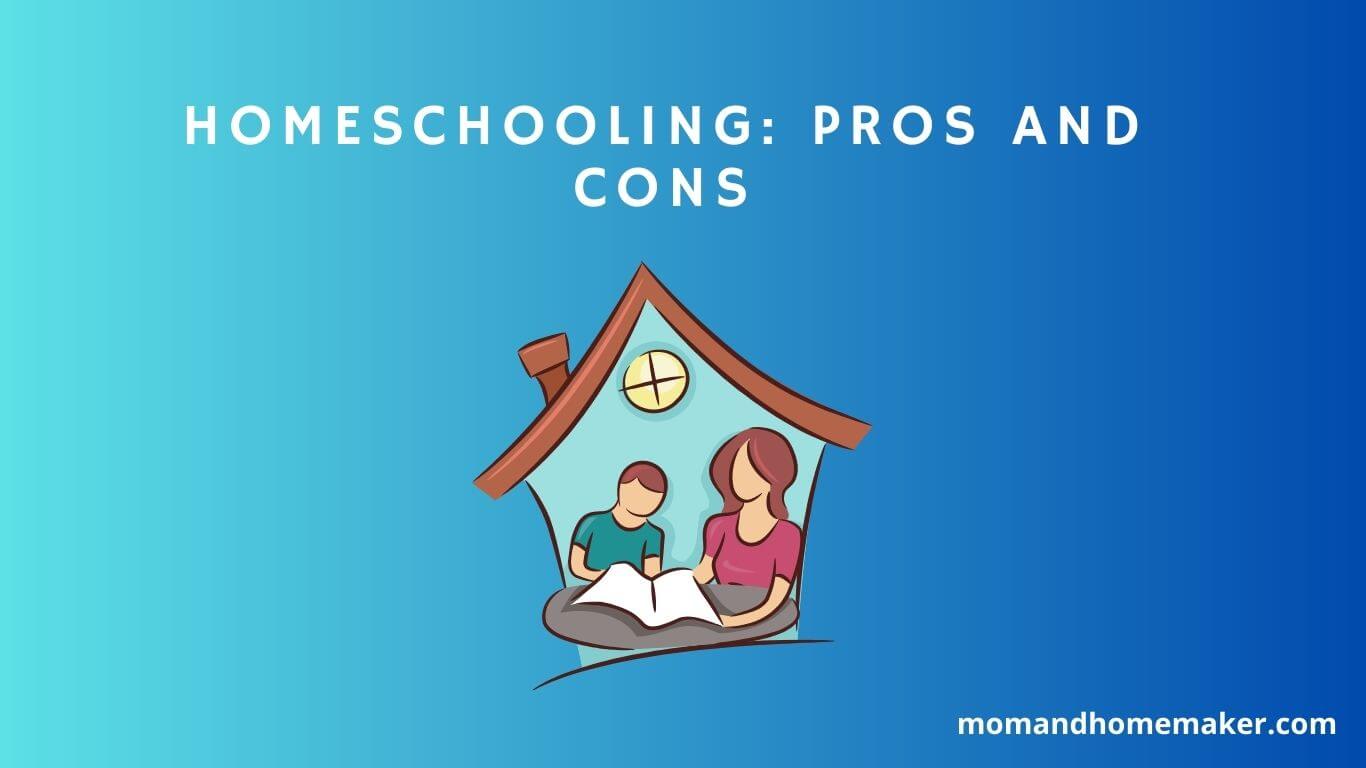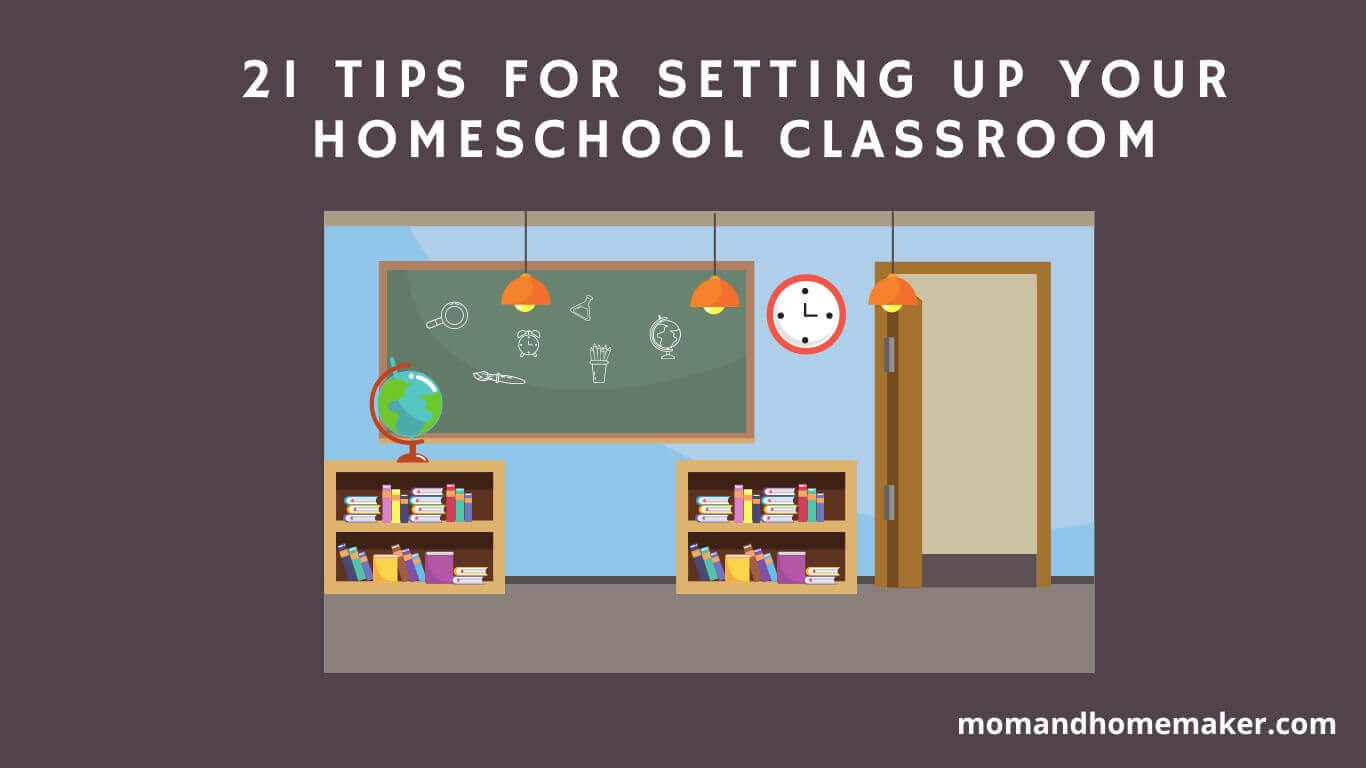Homeschooling can be a fulfilling and rewarding experience, but it can also be overwhelming at times. With so many responsibilities on your plate, from creating lesson plans to grading assignments, it can be easy to feel like you’re drowning in a sea of tasks. However, with the right tools and strategies in place, you can create a homeschool routine that is organized and efficient, giving you more time to focus on what really matters: educating your children.
Whether you’re new to homeschooling or have been doing it for years, these tips will help you stay on top of everything and make the most out of your school days.
Table of Contents
17 Secrets for Your Homeschool Routine
1. Establishing Your Priorities
With a little bit of organization and planning, you can create a routine that works for both you and your kids. What are the most important aspects of your child’s education? Is it math and science, or perhaps literature and writing? Take some time to reflect on what your family values most.
Once you’ve determined your priorities, you can begin to structure your homeschool routine around them. Remember, establishing priorities doesn’t mean neglecting other subjects entirely. Rather, it means ensuring that the most important areas are given adequate attention.
By doing so, you’ll feel less stressed and more confident in your ability to provide a quality education for your children.
2. Creating A Flexible Schedule
I think planning ahead is really important when creating a flexible schedule. That way, you know what needs to get done and when. Setting priorities is key too, so you can focus on the most important tasks first.
It can also help to create a plan that allows for flexibility, so you can adjust it as needed. That way, you can be ready for any changes that come up.
3. Planning Ahead
By taking the time to plan out your lessons for the week or month, you can ensure that you are covering all necessary material and avoiding last-minute stress. Start by creating a list of subjects and topics that need to be covered in the upcoming period. Then, allocate time slots for each subject based on their importance and difficulty level. Be sure to include breaks and activities that will help break up the day and keep your children engaged.
Another helpful tip is to prepare materials in advance. This includes printing worksheets, gathering supplies, and setting up any technology needed for online learning. By having everything ready ahead of time, you can avoid interruptions during lessons and maintain a smooth flow throughout the day.
Planning ahead may take some extra effort initially, but it will save you time and reduce stress in the long run.
4. Setting Priorities
There are countless subjects and activities that can quickly become overwhelming. However, by setting priorities and focusing on the most critical areas first, you can ensure that your children are receiving a well-rounded education.
To begin setting priorities, start by identifying which subjects are most important to your family. This may include core subjects such as math and language arts or more specialized areas such as music or art. Once you have determined these essential areas, allocate more time and resources to them in your schedule.
It’s also essential to consider your child’s individual needs when setting priorities. For example, if you have a child who struggles with reading comprehension, you may need to allocate more time for reading activities than other subjects.
5. Setting Realistic Goals
When it comes to homeschooling, setting realistic goals is key to success. It’s important to remember that every child is unique and has their own pace of learning. Therefore, don’t compare your child’s progress with other children or even siblings. Instead, set goals that are attainable based on your child’s strengths and weaknesses.
Start by identifying your child’s learning style and interests. If your child is a visual learner, incorporate more visual aids into their lessons. If they enjoy science, plan activities or experiments that revolve around this subject. By doing so, you’ll not only make learning more enjoyable for them but also increase their chances of achieving your goals.
Remember that it’s okay to adjust your goals as needed. Sometimes unexpected events can disrupt our plans or our children may need more time to grasp a concept than we anticipated. Be flexible and willing to adapt when necessary to ensure that both you and your child feel successful in the end.
6. Choosing The Right Curriculum
Choosing the right curriculum is like picking the perfect ingredients for a recipe. Each student has their own learning style and needs, just like each dish requires its specific ingredients to reach its full potential.
Before choosing your curriculum, it’s important to consider your child’s interests, strengths, and weaknesses. Are they visual learners? Do they excel in hands-on activities? These factors will help you determine which curriculum will work best for them.
Once you have identified your child’s learning style, research different curriculums that align with it. There are various options available, such as traditional textbooks, online courses, or project-based learning. Don’t be afraid to mix and match different resources to create a personalized learning experience for your child.
Consider the teaching approach of the curriculum. Some may follow a rigid structure while others allow for flexibility and customization. With so many options available on the market today, finding the right curriculum can feel overwhelming but remember that there is no one-size-fits-all solution.
7. Organizing Your Homeschool Space
Creating a designated space for homeschooling can make all the difference in your daily routine. It doesn’t have to be a whole room, but rather a specific area where you and your children can focus without distractions. This could be a corner of the living room or even a section of their bedroom. The key is to have everything you need within reach and easy to access.
Start by decluttering the space and removing any unnecessary items. Then, invest in some storage solutions such as shelves, bins, or baskets to keep supplies organized. Make sure there’s plenty of lighting and comfortable seating options for everyone.
You may also want to consider adding some personal touches like inspirational quotes or artwork to create a positive learning environment. Remember that your homeschool space doesn’t have to be perfect or Pinterest-worthy. The most important thing is that it works for you and your family’s needs.
By creating an organized and inviting space, you’ll be setting yourself up for success in your homeschooling journey. As you begin streamlining lesson planning, keep in mind how your homeschool space can support this process. Having designated areas for storing lesson plans and materials can save time and reduce stress when preparing for each day’s lessons.
With an organized space, you’ll be able to focus on what matters most – educating your children with confidence and ease.
8. Streamlining Lesson Planning
One way to do this is by breaking down your lessons into manageable chunks. Start by setting aside a specific time each day for lesson planning. This could be in the morning before the kids wake up or in the evening after they go to bed. During this time, review what needs to be covered for the week and make a plan for each day. By doing this ahead of time, you’ll avoid feeling overwhelmed and stressed during the actual teaching.
Another helpful tip is to incorporate technology into your lesson planning process. There are plenty of online resources available, from printable worksheets to interactive games. Take advantage of these tools to help keep your kids engaged and interested in learning.
Using technology can save you time and energy when it comes to grading assignments and tracking progress. By creating routines and utilizing technology, you’ll set yourself up for success. With a little bit of planning and preparation, you can create a homeschool routine that works for both you and your children.
9. Incorporating Technology
As homeschooling parents, we know that incorporating technology into our children’s education is a necessity. In this digital age, it’s practically impossible to avoid using technology in some form or another. But how do we strike the right balance between screen time and traditional learning methods? Here are some tips to help you navigate the world of educational technology.
It’s important to remember that technology should be used as a tool to enhance learning, not replace it. Don’t rely solely on online resources and apps to educate your children. Instead, use them as supplements to traditional teaching methods such as textbooks and hands-on activities. For example, if you’re teaching geography, use virtual field trips to complement a lesson on different countries and cultures.
Set boundaries when it comes to screen time. It can be easy for children (and adults) to get sucked into endless hours of YouTube videos or social media scrolling. Establish clear guidelines for when technology can be used for educational purposes and stick to them. Encourage your children to take regular breaks from screens and engage in physical activities or creative pursuits.
Don’t be afraid to experiment with different types of educational technology until you find what works best for your family. There are many options available, from interactive whiteboards and tablets to educational games and online courses. Take advantage of free trials before committing to any paid subscriptions or purchases.
As you continue on your homeschooling journey, consider utilizing online resources as another valuable tool in your arsenal. With a plethora of websites offering everything from printable worksheets to virtual classes taught by certified teachers, the possibilities are endless.
10. Utilizing Online Resources
With so much information available at our fingertips, the Internet has become a valuable tool for homeschooling families. Utilizing these resources can not only enhance your child’s education but also make your life easier as a homeschooling parent.
Here are three online resources that can benefit your homeschool routine:
- Khan Academy: This website offers free educational videos and exercises in subjects such as math, science, history, and more. It’s a great way to supplement your child’s learning or provide additional support in areas where they may need extra help.
- Scholastic Learn at Home: This resource provides daily projects and lessons for students from pre-K to grade 9. The content is designed to keep kids engaged and learning while also providing parents with a structured plan for the day.
- Virtual Field Trips: Many museums, national parks, and other cultural institutions offer virtual tours and field trips on their websites. These experiences can provide a fun and educational break from traditional lessons while still exposing your child to new ideas and concepts.
Incorporating online resources into your homeschool routine can be an excellent way to enrich your child’s education while also making the process more manageable for you as a parent. As you explore different options, consider what will work best for both you and your child based on their learning style, interests, and needs.
Getting your children involved in the planning process can be an effective way to create buy-in and encourage engagement in their education.
11. Getting Your Children Involved
It’s important to understand your children’s needs in order to successfully create a homeschool routine. Working together to come up with a routine that works for everyone will help keep everyone on the same page. Involving kids in decision-making is key to getting them involved, so they can have a sense of ownership over their learning.
Letting them help shape the plan will give them more motivation to follow through with it. We should listen to their ideas and take them into consideration when setting up the homeschool routine. By allowing them to have a say, we can help foster their enthusiasm for learning.
We should make sure to remind them that their input matters and that their ideas are valued.
12. Understanding Children’s Needs
We often strive to create a perfect routine for our children. However, understanding our children’s needs is key to getting them involved in the process. By taking the time to observe their strengths and weaknesses, we can tailor our homeschooling routine to fit their unique learning styles.
One way to understand your child’s needs is by observing their behavior throughout the day. If they seem more alert and focused in the morning, you may want to schedule your most challenging lessons during that time. On the other hand, if they tend to get easily distracted after lunch, it may be best to schedule more relaxed activities during that period.
Another important aspect of understanding your children’s needs is recognizing when they need a break. Homeschooling can be overwhelming at times, and it’s crucial to give your children opportunities for downtime throughout the day. By incorporating breaks into your routine, you’re allowing them to recharge and come back refreshed and ready to learn.
Sit down with your children and discuss what they would like to accomplish during the day. Encourage them to share their goals and aspirations, and work together to create a routine that aligns with their interests. By involving them in the decision-making process, you’re empowering them to take responsibility for their education.
By observing their behavior patterns and recognizing when they need a break, you can create a tailored routine that works best for them. Remember that every child is different, so don’t be afraid to adjust your routine as needed to ensure their success.
13. Creating Routines Together
r. Involving your children in the process not only gives them a sense of ownership but also teaches them valuable life skills such as time management and organization.
Start by sitting down with your children and discussing what they would like to accomplish during the day. Encourage them to share their goals and aspirations, and work together to create a routine that aligns with their interests. By involving them in the decision-making process, you’re empowering them to take responsibility for their education.
Once you have a rough idea of what your routine will look like, it’s essential to communicate any changes or adjustments with your children regularly. This way, they can provide feedback on what’s working and what isn’t.
Remember that homeschooling is a team effort, and by creating routines together, you’re fostering a positive learning environment that benefits everyone involved.
14. Taking Breaks And Self-Care
It’s easy to get caught up in the hustle and bustle of homeschooling. As a parent, you want to make sure your child is getting the education they deserve, but it’s important not to forget about yourself.
Taking breaks throughout the day can help you recharge and refocus on what’s important. Whether it’s a quick walk outside or a few minutes of meditation, taking care of yourself will ultimately benefit both you and your child.
Self-care goes hand in hand with taking breaks. Make sure you’re giving yourself time each day to do something that makes you happy. This could be reading a book, taking a hot bath, or even just enjoying a cup of tea. It may seem like small things, but it can make all the difference in how you approach your homeschool routine.
Remember that self-care isn’t selfish – it’s necessary for your well-being and success as a homeschool parent. By taking care of yourself, you’ll be better equipped to handle the challenges that come with educating your child at home.
Don’t forget to take breaks and prioritize self-care. These simple steps will help you stay focused and energized throughout the day.
15. Evaluating Progress And Adjusting
Taking breaks and prioritizing self-care are crucial components of a successful homeschool routine. However, it’s equally important to regularly evaluate your progress and make necessary adjustments. This will help you stay on track with your goals and ensure that your children are receiving the best education possible.
To evaluate your progress, start by looking at your original goals and objectives for homeschooling. Are you meeting these goals? Have they changed over time?
Next, assess your child’s academic progress. Are they keeping up with grade-level expectations? Are there any areas where they may need additional support or resources? Take a look at your daily routine. Is it working well for you and your family? Do you need to make any changes to better accommodate everyone’s needs?
Once you’ve evaluated your progress, it’s time to make any necessary adjustments. This could mean changing up your daily routine, finding new resources for certain subjects, or even enrolling your child in outside classes or activities if needed.
Remember that flexibility is key when it comes to homeschooling – what works for one family may not work for yours. Don’t be afraid to try something new if what you’re currently doing isn’t working. As homeschooling can sometimes feel isolating, finding support and community is crucial for both you and your children.
16. Finding Support And Community
Connecting with other homeschoolers can be an excellent way to find support and community. It can be challenging to navigate the homeschooling world alone, but fortunately, there are several ways to connect with other families. One option is to join a local homeschool group. These groups typically meet regularly and offer opportunities for socialization, as well as resources and advice from more experienced homeschoolers.
Another way to find support is through online communities. Social media platforms like Facebook have dedicated groups for homeschoolers where you can ask questions and share ideas. You can also find forums and message boards on websites like Homeschool.com or The Well-Trained Mind. These communities can provide a wealth of information and support – just be sure to take everything with a grain of salt, as opinions on homeschooling can vary significantly.
Attending conferences or workshops is another great way to connect with other homeschoolers and gain valuable insights into organizing your routine. Local and national conferences often feature speakers who are experts in various aspects of homeschooling, such as curriculum selection or time management strategies. Plus, these events offer opportunities to network with other families and make lasting connections.
By finding support and community among other homeschoolers, you’ll have access to valuable resources and advice that will help make your journey smoother. While it may take some effort to connect with others initially, the benefits far outweigh any discomfort you may feel stepping outside of your comfort zone. With the right connections in place, you’ll feel more confident in your ability to organize your routine effectively.
17. Embracing Flexibility And Adaptability
We know that sticking to a routine can be overwhelming. However, finding support and community can help us stay on track. We can learn from each other’s experiences and get advice on how to manage our time effectively. But what happens when things don’t go as planned? This is where embracing flexibility and adaptability comes in.
Life is unpredictable, and unexpected situations can arise at any moment. As homeschoolers, we need to be ready for those moments and adjust our routines accordingly. This doesn’t mean we should abandon our plans altogether but rather find ways to work around them. For example, if your child gets sick or a relative visits unexpectedly, you might have to shift your schedule around a bit. The key is to remain flexible while still maintaining consistency in your homeschooling efforts.
To help you embrace flexibility and adaptability in your homeschool routine, we’ve put together this table outlining some tips:
| Tips for Embracing Flexibility | Examples |
|---|---|
| Be open-minded | Try new teaching methods or curricula |
| Prioritize tasks | Choose the most important tasks for the day |
| Take breaks | Step away from schoolwork for a bit if needed |
Remember that these are just suggestions – you know best what works for you and your family. By staying open-minded, prioritizing tasks, and taking breaks when necessary, you’ll be able to handle any curveballs life throws your way without sacrificing your child’s education.
So keep in mind that while having a routine is essential in homeschooling, being flexible and adaptable is just as important. Life will always throw us unexpected challenges but with the right mindset and strategies in place; we can overcome them and continue providing our children with an excellent education.
Conclusion
There is no such thing as a perfect homeschool routine. The beauty of homeschooling lies in its flexibility and adaptability. Sure, having a schedule and goals can help guide your days, but don’t be afraid to deviate from them when life happens.
Embrace the chaos and the unexpected moments because those are often the ones that lead to the most valuable learning experiences. Organize your homeschool routine, but remember to also embrace the irony of trying to perfectly schedule something that is inherently flexible.

